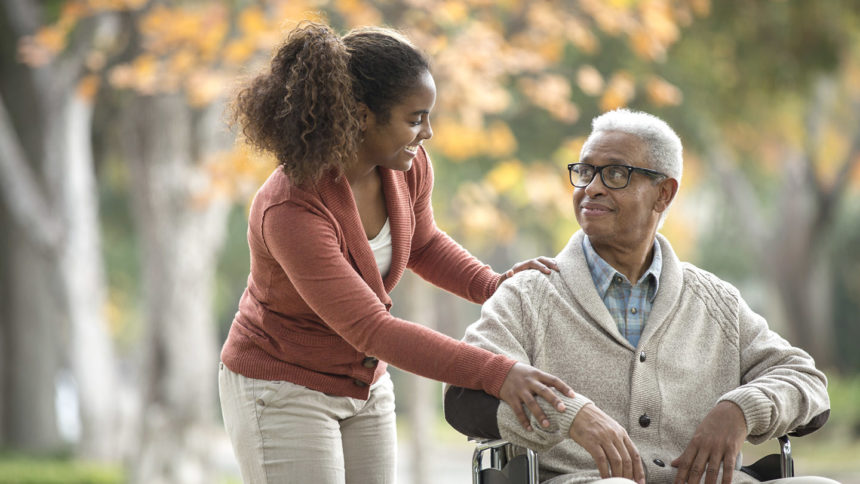
(Credit: Terry Vine / Getty Images)
Acknowledging, incorporating and supporting the “invisible workforce” of informal family caregivers can benefit residents, professional caregivers and staff members in assisted living communities and other long-term care residential settings, according to a new Health Affairs study.
Researchers from the University of Pennsylvania, Philadelphia, found that the prevalence of informal care being provided for residents in assisted living communities and nursing homes who needed help with activities of daily living was “considerable.”
The work of these informal caregivers could be acknowledged more formally through integrating family caregivers into care teams, prioritizing safe visits with family members during emergencies, and including family caregivers in prioritization formulas for vaccines during future pandemics, according to the study, published Tuesday.
Integrating family caregivers could take the form of providing payment for services, offering formal training, partnering with formal caregivers to personalize care, and acknowledging that informal caregiving sometimes serves as a substitute for — rather than a supplement to — formal care, the authors wrote.
The investigators noted that the “important role” of family caregivers came to the forefront during the COVID-19 pandemic, when visitor bans prevented them from entering facilities for substantial periods of time — more than a year for some residents. Higher rates of depression and increased behavioral problems among residents were attributed to a lack of family interaction, particularly among residents living with dementia.
Using data from the 2015 National Health and Aging Trends Study for residential care facilities such as assisted living communities, researchers found that hours of informal care were “substantial.” Among those who needed and received informal care, older adults received an average of 130.7 to 161 hours per month if they lived in the greater community compared with 65 hours per month if they lived in assisted living communities. For nursing home residents, the number of hours of informal care provided was smaller but still substantial, at 37.4 hours per month, based on data from the 2016 Health and Retirement Study.
The data also showed that informal caregivers provided assistance to 90% of the assisted living residents who needed help with household activities such as banking (91% of those who needed such help received it from an informal caregiver), shopping (85%), laundry (51%) and preparing hot meals (31%).
Fifty-two percent of assisted living residents who needed help with mobility needs received it from an informal caregiver, and 27% who needed assistance with self-care received it from an informal caregiver.
Those and other study results, the authors stated, raise concerns about adequate staffing levels in long-term care facilities. Both assisted living communities and nursing homes had reports of “considerable levels” of unmet needs even before the pandemic, with unmet needs likely increasing during lockdowns due to worsening staff shortages and visitor restrictions, they said.
The authors said the data also raised questions about how the needs of residents without informal caregivers are met in such settings.
“Together, this is suggestive evidence that nursing homes and residential care facilities might not be staffed or equipped to provide all of the care required, much less respite for caregivers,” they wrote. “Revisiting minimum staffing requirements may be necessary if the needs of elders are to be met and their family members’ burdens reduced.”
The study concluded that policies and practices that incorporate informal caregivers into the care delivery system could benefit care recipients, caregivers and staff members in residential care facilities and nursing homes.
The study was supported by the National Institute on Aging of the National Institutes of Health.




